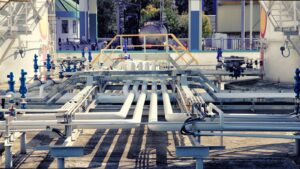Savings are a phenomenal responsibility of asset utilisers because a large portion of capital investments are proportioned for industrial organisations’ management, maintenance, control, and replacement of fixed assets. Since the beginning of time, eliminating expense sinkholes when managing assets has been a well-known challenge for non-current asset utilisers. With the industrial world-changing to its next best self with the power of industry 4.0 technologies and other innovative trends, the dynamics of asset networks also advance with time. These changes all result in one drawback for most industrial asset users: increasing expenses.
Due to this detrimental weakness, many asset managers turn to technological capabilities that have the propensity to guide decision-makers in making smart financial decisions when managing assets. This article discusses the most intriguing technologies of the new age that play vital roles in saving costs for modern asset managers.
Asset Lifecycle Costs Are Considerable Yet Unseeable
Asset lifecycle costs can be summed up to millions of dollars depending on the type of asset, whether it’s a water dam, road, water system, power grid, building structure, bridge, production line, machine or any other asset class. The most significant problem with all asset expenses is that they are not transparent enough. This is due to the fragmented systems that are used by asset managers in financing and budgeting asset strategies.
The inability to pinpoint the asset criticality, degradation curves, reliability and suboptimal performance levels when calculating budget equations misguides asset investors in understanding the most apt ways to prepare fact-based asset investment profiles for fixed assets. This is where technologies that enable seamless and effortless ways to tailor budget profiles and investment plans become crucial in asset management.
Technologies that Facilitate Financial Decision-making for Fixed Assets
Trained Automated Models
Train AI (Artificial Intelligence) models like Total Asset Investment Models by feeding them the trends of asset costs. The financial decision-makers in the asset management sector do not require to analyse budgets anymore. They can simply connect the AI frameworks for the historical data and the real-time data. The AI models have the propensity to prescribe a few of the best budget profiles. These models act as an analytical hub that interconnects all data from disparate asset data sources to get a comprehensive evaluation of the maintenance, operational and risk mitigation investment that the asset managers have to make. By running over these insights, modern asset managers can effortlessly initiate asset maintenance, repair and replacement decisions.
For example, the asset manager can train the model with the past ten years of asset-related financial decisions and build a protocol that will automatically generate the most cost-efficient budget profile for the financial decision-makers and investors of the organisation. They can also scale these profiles to one asset or an expansive asset system laid over a whole city or country if implemented right.
Condition-based Budgeting Using Predictive and Prescriptive Analytics
Predictive and prescriptive analytics technologies are used by asset managers to tailor budget profiles based on future asset conditions. These technologies allow asset managers to take actual asset conditions (that are dynamically changing based on the location, environment, asset properties, usage and more) when making financial decisions. Asset managers can employ a CMMS (Computerised Maintenance Management System) to make tremendous financial analysis efforts by studying the impact of the overall asset life cycles on the financial viability of the organisation.
For example, the asset manager can use an advanced analytics tool to understand the variation of the budget requirements across a scope of ten years ahead. In other words, they will use these insights to learn the financial strength the organisation should have each year based on the condition of their assets. They can also share this information with investors and other stakeholders that are responsible for funding the asset replacement, maintenance and deployment practices. All decision-makers can then use these insights to use transparent yet actionable insights to come to a collective decision on future asset investments even before they occur.
Smart Visualisation Dashboards
The smart AI-driven visualisation dashboards allow the asset managers to conveniently utilise an interactive plan to compare and contrast automatically-generated budget profiles for better insights. This will help the decision-makers to relate the budget scenarios based on the viability of the organisation and the criticality of the assets. As all asset information is circulated to a single hub via IoT systems, these visualisation tools give a comprehensive overview based on actual facts.
For example, if the predictive analytics predict the two budget scenarios (‘Budget Scenario A’ and ‘Budget Scenario B’), the manager can elaborate and compare the A and B using interactive tools. They can compare the ROI levels of the decisions and the level of impact they will have in sustaining the asset conditional and structural health separately. They can also incorporate the deferred maintenance jobs in real-time and get a robust perspective using graphic content that summates the full scope within a few clicks.







